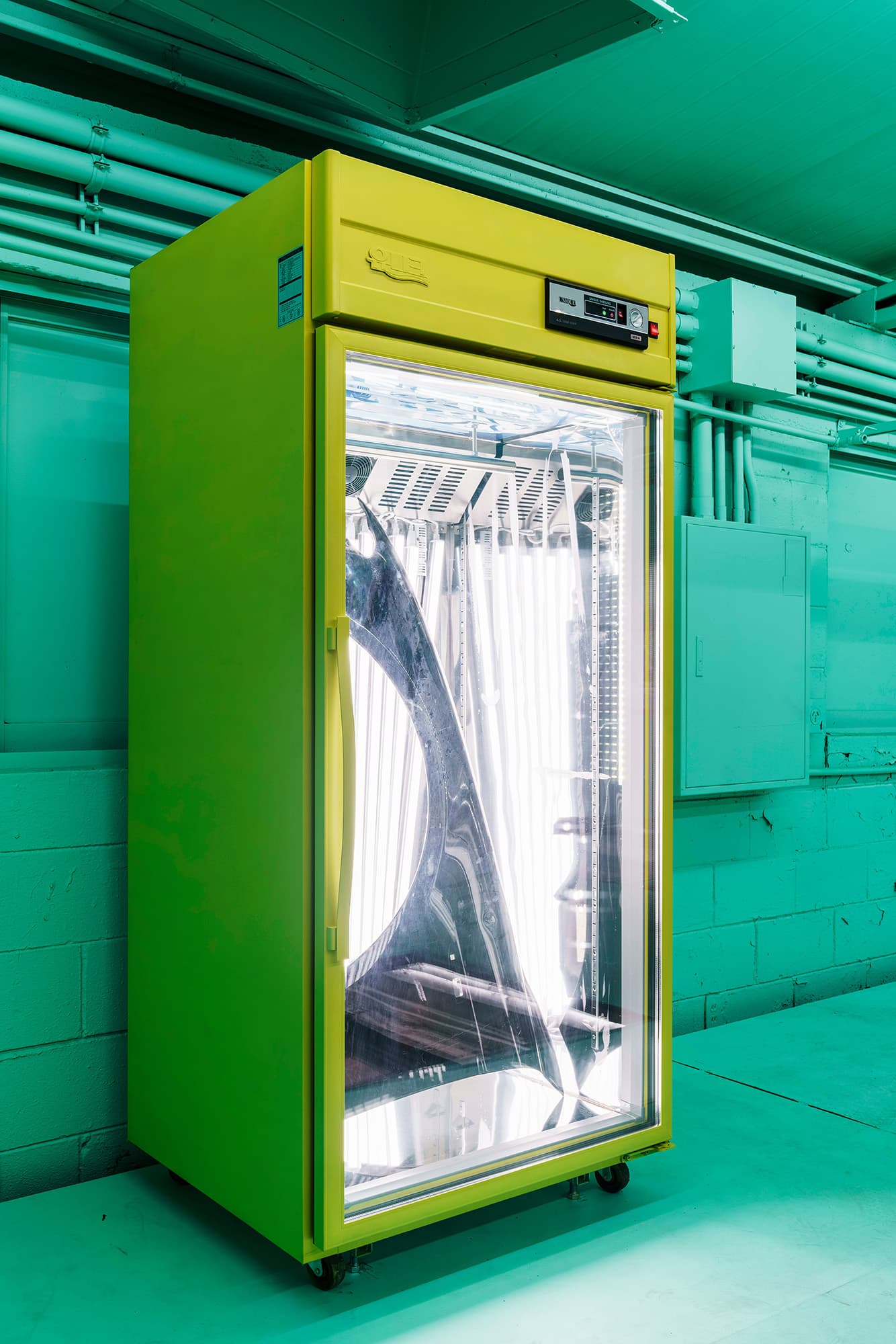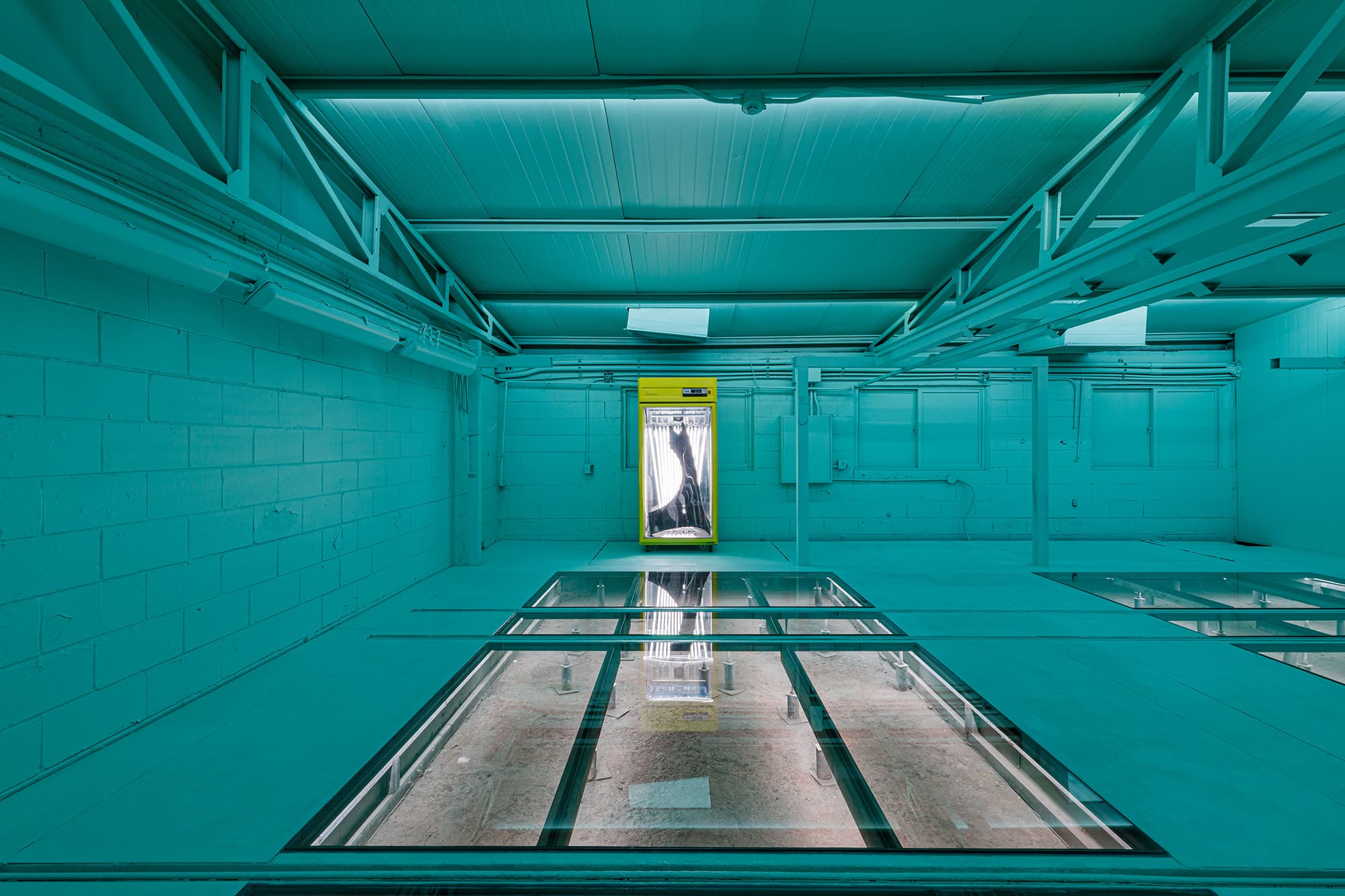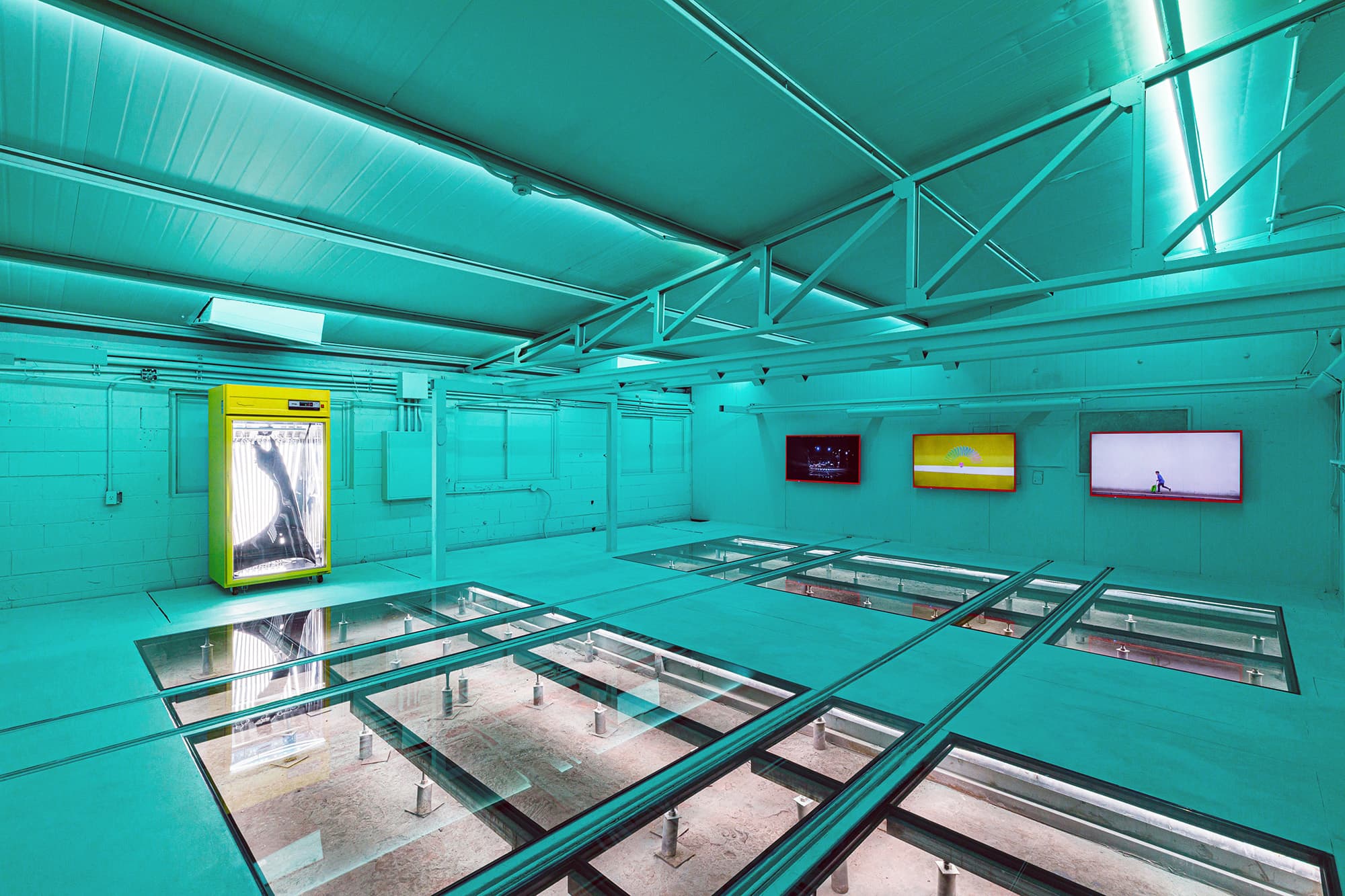Three writers suddenly intervened AI in the process of developing ideas. How did they end up? In the process of finding a consensus, AI composer was attracted and four subjects existed in the fence of collaboration.
Creators are quite open to the form of collaboration. The visual artists in various fields Kim Jung-Tae, Jo Ho-Young, and Choi Jin-Hoon, who gathered as a members of ZER01NE Lab, and running a project called <Where do you go project> under the name of ‘Triple Core’ in 2019, would have probably end up as a non-special collaboration. Through continuous discussions and sharing thoughts on the common theme of “shifting future,” a total of five works were created: music, video, and installation that visualized the concept.
1. Somewhere, 2019, FIRST AID arrangement, 2 channel sound, 3 minutes and 20 seconds
2. 无目标区域, 2019, Kim Jung-Tae, single channel video, color, 3 minutes and 20 seconds
3. Elegant Destination, 2019, Jo Ho-Young, single channel video, color, 3 minutes and 20 seconds
4. nowhere, 2019, Choi Jin-hoon, single channel video, color, 3 minutes and 20 seconds
5. Ruins Trophy, 2019, 3 channel video, site specific installation
It is a form in which three videos containing imaginations of shift of each author are simultaneously played on individual monitors in accordance with one complete music <Somewhere>. Not only they gave a visually symbolic connection by allowing certain scenes or items that appeared in one video to permeate in the way that they exist in the frame of another video, but also did not miss the close relationship between works by supplying labor and resources to each other during the filming process.
Collaboration is,
A form of labor in which all processes of production are divided into specialized sectors and divided by several people to complete the work.
In the process of developing ideas, the three artists suddenly intervened with AI, taking an unexpected path. It wasn’t a coincidence, and as a result of the choice that could not be guaranteed to be inevitable, unplanned and unexpected meanings were engraved in their collaboration. Author Choi Jin-Hoon says that the starting point of the music video production was music, and the music used here shook the whole framework of collaboration; it was impossible to create one song that ‘completely’ reflected the tastes of the three.
“We chose a commercial and popular music video as a medium to visualize in order to convey the corporate message of mobility and overcome the shortcomings of modern art with low accessibility. We thought that if we show familiar music with specific visuals, audience can focus on difficult topics.” However, after sharing hundreds of songs of each style they wanted, or having a fierce conversation every day, the way to the correct answer did not appear. The long lasting campaign continued. “You have to listen to everyone’s stories and understand them completely. No one should take a step back or speak out loud.” Artist Choi Jin-Hoon explains the ideal collaboration like this. However, unification of opinions is inevitably impossible unless no one makes concessions. Watertight collaboration may not even exist in the first place.
Bringing AI to collaboration is the first experience for all three visual artists. In order to avoid unnecessary energy, emotional consumption, and inefficiency that occur in the process of finding an agreement, everyone voted for AI composers. There was a belief that if the three people trained AI in large quantities of references to songs they wanted to make, they would find the median value, increase accuracy, reduce errors, and eventually produce songs that reflect 100% of their common tastes. We imagined the ‘Era of anyone making music’, and expected that an AI composer would magically release a plausible song; but in reality, it was not. The result was weird enough to feel a bit bizarre, and additional work that humans had to do, such as choosing an instrument or putting in a chorus, was required, so after hiring a composer, we had to refine it like music. At this point, it seems clear that even the use of an AI composition program does not meet the aesthetic standards of artistic music. Of course, they appreciate that this was also a fun process because AI composers have confirmed themselves that they cannot yet be the subject of art.
Triple Core puts the AI composer’s music created for this project largely as a process of collaboration, not as a debate as a value for the outcome; the fact that the three visual artists used the power of AI to achieve a new form of collaboration that didn’t exist before. Author Choi Jin-Hoon expressed that he was satisfied because the difficult persuasion and coordination of humans with a lot of labor, time, and necessity could be finished with the help of AI. It is also his naked mind that the moment he chose AI, he didn’t care about the outcome. However, the part he emphasized by empowering his voice is not the form of division of labor in which he is responsible for the job he does well or the method of collaboration he has been doing in the past, where someone becomes a leader and leads and takes responsibility, but to respect everyone’s opinions and tastes fairly through conversation, and an attempt to complete collaboration that was done and tried to solve the impossible part of the process using AI. Also, artist Choi Jin-Hoon expresses his opinion that when collaboration is as close as possible to perfection, it is free from blame and responsibility.
“I wonder if human nature was revealed here. We all want to avoid responsibility for consequences, to pass the responsibility on to someone else.” Artist Jo Ho-young said that this must always occur naturally in the process of collaborating with artists, and this time, even if an unsatisfactory result is produced, the object to be blamed disappears (Because it was AI, not humans, who collected the tastes of the three artists), and the stage of deriving a piece of music regardless of whether the music as art is satisfied or not, and believes that ‘perfect’ collaboration has become possible.
Ultimately, it is considered that the AI composition program used by Triple Core was not artificial intelligence as a subject of new art, nor did it play a role as a tool of art. As another subject intervened by humans, coordinating the opinions of the three, it existed together in the work of <Where do you go project>. Wouldn’t it be okay to conclude that this was a collaboration between humans and AI? In the framework of art, they do not judge right or wrong with efficiency, but with the standard of collaboration, their opinion is agreeable. As mentioned earlier, collaboration refers to a form of labor in which all processes of production are divided into specialized sectors and divided by several people to complete work. Triple Core’s <Where do you go project> clearly shows that the definition of the concept of collaboration has changed and is gradually expanding due to science and technology brought into art.





